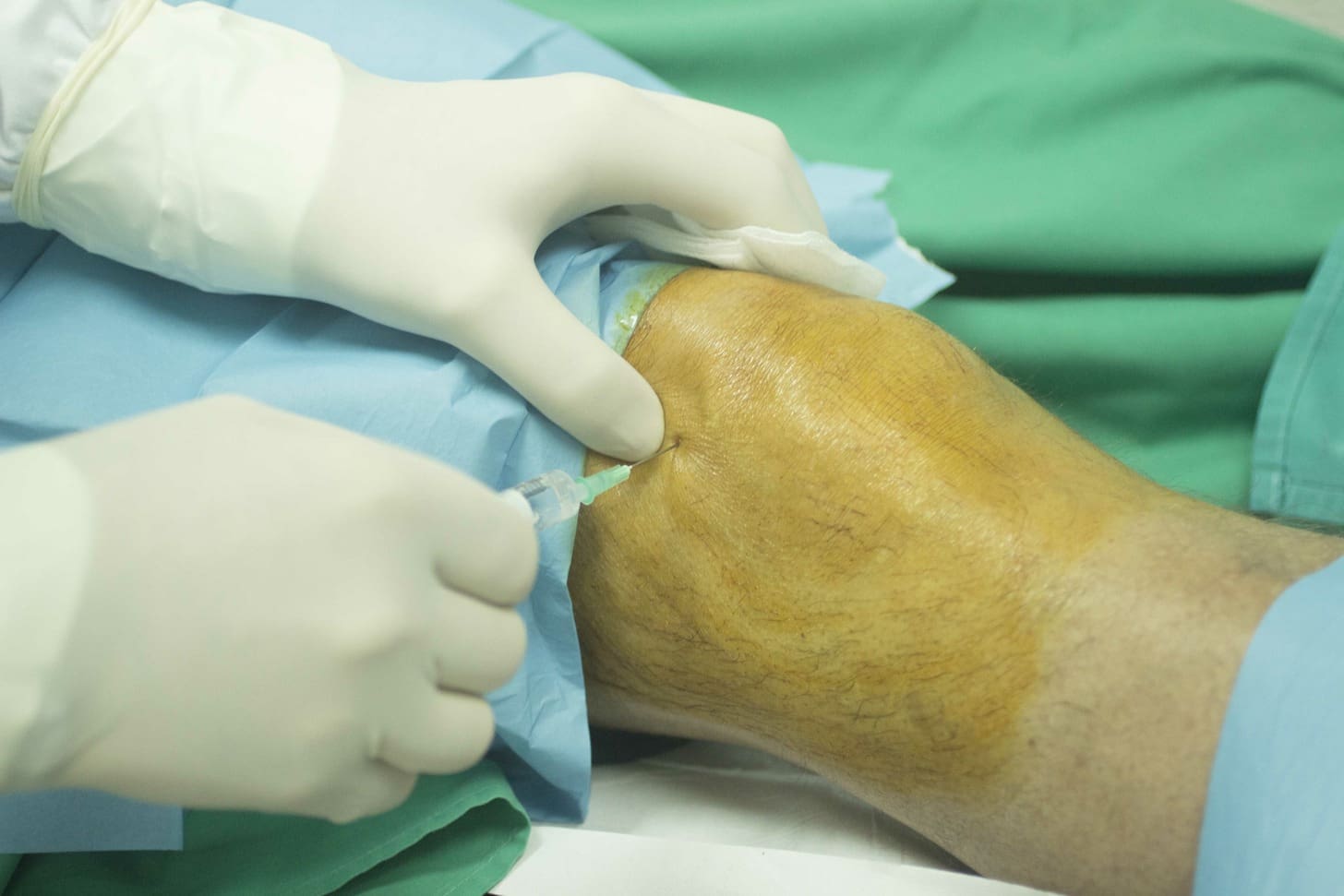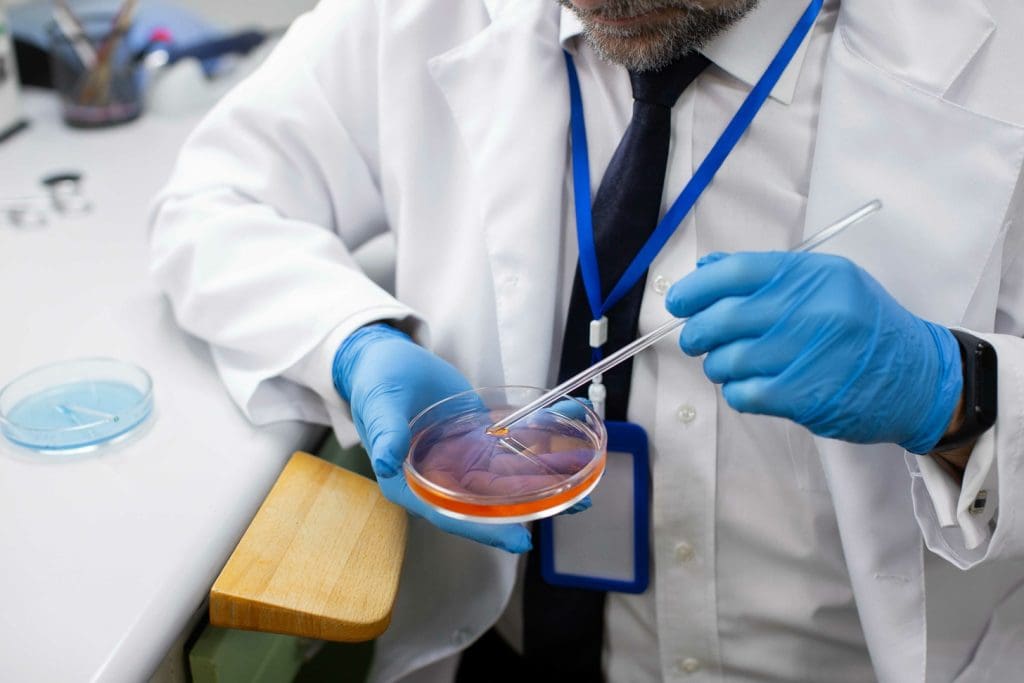Last Updated on October 21, 2025 by mcelik

Having a bone marrow biopsy can feel scary. But, with the right care, recovery can be quick and easy. At Liv Hospital, we focus on giving our patients the best care to make them feel comfortable and safe.
Most patients feel some pain or soreness at the biopsy spot for a few days. We know that with the right steps, patients can heal fast and avoid problems. Our team is committed to top-notch healthcare and helping international patients.

Bone marrow aspiration is a medical test that takes a sample of bone marrow. It’s often done with a bone marrow biopsy. We’ll explain why it’s done, how it’s done, and where it’s done.
This test helps find and track blood disorders like leukemia or anemia. It checks the bone marrow’s health and looks for any problems.
The patient gets local anesthesia first. Then, a doctor uses a needle to take a sample from the bone marrow. It’s a quick process, lasting about 10-15 minutes.
The bone marrow is usually taken from the hip bone or the sternum. The choice depends on the patient’s age, health, and the doctor’s preference.
| Location | Advantages | Disadvantages |
|---|---|---|
| Hip Bone (Pelvis) | Easy access, ample marrow | Potential discomfort |
| Sternum | Alternative site when pelvis is not suitable | Increased risk of complications |
Knowing what to expect after a bone marrow aspiration is key for a smooth recovery. We’ll cover the immediate feelings, the usual recovery time, and what can speed up or slow down your healing.
Right after the procedure, you might feel some pain, like soreness or bruising. These feelings are usually not too bad and can be eased with over-the-counter pain meds. You might also feel a bit tired or dizzy if you were sedated during the procedure.
The time it takes to get back to normal after a bone marrow aspiration varies. But most people can get back to their usual activities in about a week. In the first 24 hours, it’s best to rest and deal with any soreness or discomfort.
By 48-72 hours, most people start to feel better, with the soreness getting less. It usually takes 7-10 days to fully recover.
Several things can affect how fast you recover. Your health, age, and any medical conditions you have can play a role. Also, following your doctor’s instructions and going to follow-up appointments can help a lot. Keep an eye out for any signs of complications, like infection or too much bleeding.
By knowing these factors and what to expect, you can prepare for a good recovery. It’s vital to listen to your healthcare provider to make sure you heal quickly and smoothly.
After a bone marrow aspiration, the biopsy site needs special care. It’s like an open wound that must heal right to avoid infection. Proper care is the first step to a successful recovery.
For at least 24 hours, keep the biopsy site clean and dry. This is the first step to healing. Avoid touching the site to stop bacteria from getting in. If it gets wet or dirty, gently cover it with a new bandage.
Managing your bandage is important for a clean site. Here’s what to do:
Here’s how to bathe or shower safely:
By following these tips, you can lower the risk of problems and help your recovery go smoothly.
Managing pain well is key to a smooth recovery after a bone marrow aspiration. Pain levels can vary a lot among patients. It’s important to have a good plan to manage it.
Patients usually feel some discomfort or pain at the biopsy site after the procedure. The pain can be mild or moderate. It depends on how well you handle pain and the details of your procedure.
We suggest using over-the-counter pain meds like acetaminophen for pain after the procedure. Always follow the dosage your doctor or the packaging says. This ensures safe and effective pain relief.
Using an ice pack on the affected area can help reduce discomfort and swelling. Here’s how to do it right:
Wrap the ice pack in a cloth or towel to avoid ice burn. Place the wrapped ice pack gently over the biopsy site.
Use the ice pack for 15-20 minutes at a time. Take at least a 30-minute break before applying it again. Repeat as needed, usually for the first 24 to 48 hours.
| Pain Management Method | Duration | Frequency |
|---|---|---|
| Ice Pack Application | 15-20 minutes | Every 30 minutes |
| Acetaminophen | As directed on packaging | Every 4-6 hours |
Using these pain management methods together can help reduce discomfort. It’s important to follow your doctor’s advice. They can give you personalized tips based on your health and procedure details.
To avoid complications after bone marrow aspiration, follow certain activity restrictions. It’s important to understand and stick to these guidelines for a smooth recovery.
Stay away from hard activities like heavy exercise or bending for 24 to 48 hours after the procedure. This lets your body heal and lowers the chance of bleeding or pain at the biopsy site. Resting and avoiding overexertion are key to a successful recovery.
Avoid heavy lifting for a few days after the procedure. We suggest not lifting anything over 10 pounds (about 4.5 kilograms) for 24 to 48 hours. This helps prevent strain on the biopsy site and aids in healing.
If you got sedation during the procedure, make sure someone drives you home. Sedation can make it unsafe to drive. Ensure you have a responsible adult to accompany you home and assist you if needed. As one healthcare provider noted, “Having someone with you after sedation is not just a recommendation, it’s a necessity for your safety.”
By following these activity restrictions and physical limitations, you can greatly reduce the risk of complications. This supports your body’s healing process after bone marrow aspiration.
After a bone marrow aspiration, knowing about possible complications is key. The procedure is mostly safe, but risks like infection and bleeding can happen. We’ll show you how to spot warning signs and when to get help.
Infection is a risk after a bone marrow aspiration. Watch the biopsy site for signs of infection, such as:
If you see these symptoms, call your healthcare provider right away.
Some bleeding or bruising is normal. But excessive bleeding or a hematoma is a complication. Look out for:
If you have any of these, call your healthcare provider:
For more tips on recovering at home, check out Liv Hospital’s resource page. Taking care of yourself can really help your recovery.
Good nutrition and hydration are vital for a quick recovery. A balanced diet gives your body what it needs to heal well.
Eating a variety of nutrient-rich foods is key. Lean proteins like chicken, fish, and beans help fix tissues. Whole grains give you energy that lasts. Fresh fruits and veggies boost your immune system and health.
Drinking enough water is critical for healing. It helps avoid constipation from pain meds and aids in repair. Drink at least eight glasses of water a day.
Some supplements can help with bone health during recovery. Calcium and vitamin D are important for bone strength. But, always talk to your doctor before taking any supplements.
Emotional and physical comfort are key to healing after bone marrow aspiration. The recovery can be tough. It’s vital to handle both well.
Feeling anxious or worried after a procedure is normal. To deal with these feelings, try:
If anxiety is too much, talk to a mental health expert for help.
Finding a good sleep position is important for rest and healing. We suggest:
It’s important to slowly get back to normal activities to avoid problems. We recommend:
Listening to your body and following these tips can make recovery smoother.
Recovery after a bone marrow aspiration needs focus on follow-up care and medical support. It’s important to keep in touch with your healthcare provider. This helps track your healing and solve any issues.
Going to follow-up appointments is key for several reasons. It lets your healthcare provider check how you’re doing and watch for problems. It’s also a chance to talk about any issues or symptoms you have.
At these visits, your healthcare provider might do more tests or exams. It’s a good idea to write down any questions or concerns you have beforehand.
Here are some questions to ask at your follow-up appointments:
Understanding your test results is a big part of follow-up care. Your healthcare provider will explain the results of any tests done during your visits. Make sure to ask questions if you’re not clear about anything.
The table below shows some common test results and what they mean:
| Test Result | Implication |
|---|---|
| Normal bone marrow cellularity | Indicates normal bone marrow function |
| Abnormal cell morphology | May indicate underlying conditions requiring further investigation |
| Presence of infection | Requires prompt treatment to prevent complications |
By focusing on follow-up care and staying informed, you can have a successful recovery. Remember, your healthcare provider is there to help. Keeping open communication is key to a smooth recovery.
Recovering from bone marrow aspiration needs careful aftercare for a quick and successful outcome. By following the 7 essential aftercare tips in this article, patients can lower the risk of complications and aid in healing.
Proper care of the biopsy site, effective pain management, and avoiding overactivity are key in the early stages. Keeping an eye out for complications, eating well, staying hydrated, and managing emotional and physical comfort are also important.
We suggest that patients stick to their healthcare provider’s advice and attend all follow-up appointments. This helps in avoiding infections, managing pain, and getting back to normal activities quickly.
A fast recovery is possible with the right aftercare. We aim to provide top-notch healthcare and support for international patients. If patients have any concerns or questions, they should reach out to their healthcare provider.
Most people recover in a few days to a week after the procedure. It’s key to follow your healthcare provider’s aftercare instructions for a smooth recovery.
Keep the area clean and dry for at least 24 hours. Replace the bandage as instructed by your healthcare provider. Avoid water until it heals fully.
Some pain is normal after the procedure. Use over-the-counter pain meds as directed. An ice pack can also help with discomfort.
Yes, avoid strenuous activities, heavy lifting, and bending for 24-48 hours. Don’t drive or operate heavy machinery if sedated.
Look out for increased redness, swelling, or drainage, and fever or chills. Contact your healthcare provider if you see these signs.
Eat a balanced diet, stay hydrated, and rest well. Some supplements may help with bone health, but check with your healthcare provider first.
Recovery time varies. You can usually return to normal within a few days to a week. Always follow your healthcare provider’s advice.
Follow-up appointments let your healthcare provider check on your recovery and discuss test results. This care is vital for a successful recovery and catching any complications early.
Results time varies based on test complexity and lab processing. Your healthcare provider will tell you when to expect your results and discuss them with you.
Avoid water until the site heals. You can usually shower after 24 hours, but follow your healthcare provider’s bathing and wound care instructions.
If you see a lot of bleeding or a large hematoma, contact your healthcare provider right away. They may advise applying pressure or other actions to manage the bleeding.
Subscribe to our e-newsletter to stay informed about the latest innovations in the world of health and exclusive offers!